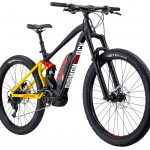Image of gears as removed from drive unit, still attached to plate. These gears lift off, slight tap required.
Attachments
-
1.7 MB Views: 58
On mine i did not add extra grease to the metal gears, the gears left in the motor seemed very clean. Where there was a dob of grease on one of the nylon gears and it was very tacky when rotating by hand. I did use silicone grease on the bearing, and when re-assembling the bearing seal.Thanks for the instructions...looks like i'm going to be doing this in the not too distance future.
One little question: what grease should I use on the metal gears?
many thanks
Thanks for the reply.On mine i did not add extra grease to the metal gears, the gears left in the motor seemed very clean. Where there was a dob of grease on one of the nylon gears and it was very tacky when rotating by hand. I did use silicone grease on the bearing, and when re-assembling the bearing seal.
My motor rotates ok now, it is still stiff compared to a standard bike bb, but much better than before. It seems quieter with a longer range to boot.
btw I did this because I had no other choice, I did not ask a bike shop. Although from what I have seen, Bosch are only interested in warranting motors as complete drive units and are not really supporting secondary market.
Knowing what I know now I would not buy another Bosch either new or second hand. My experience of buying bits of manual bikes on ebay and building them up doesn't fit with ebikes. Despite the massive costs they seem to be disposal if the go wrong, hardly environmentally friendly.
I don't think any of other middrive motors ie Shimano Yamaha Brose are any different for out of warranty support. Exchange faulty motor for refurbished motor for big $$. None of their bearings especially on MTBs will last for ever. Being able to replace bearing yourself is big plus.Knowing what I know now I would not buy another Bosch either new or second hand. My experience of buying bits of manual bikes on ebay and building them up doesn't fit with ebikes. Despite the massive costs they seem to be disposable if they go wrong, hardly environmentally friendly.
I guess you right, but the salesman isn't going to highlight these issues which could mean that your £6000 purchase cannot be ridden or repaired in 2 years time, once the warranty period ends. You may be able to sell off the components to recoup some of the money, or if you are lucky you can buy a second hand e-bike and swap over the drive unit. Which might not work as it could have unmatched software coding.I don't think any of other middrive motors ie Shimano Yamaha Brose are any different for out of warranty support. Exchange faulty motor for refurbished motor for big $$. None of their bearings especially on MTBs will last for ever. Being able to replace bearing yourself is big plus.
Great to hear that.Energizer Bunny: thanks for the instructions
Bearing fitted and motor nice a quiet now.
Painless from start to finish..
A lot of people buy a mountain bike as commuter then set about changing it to the trekking bike they should have bought by putting on road tyres, mudguards, carriers, lights, etc.[Unquote]
I must confess to doing exactly that! Powerfly7 (which HAS got the plastic protector seal - hence the 4,000 miles and no bearing play at all) - mudguards, carrier, panniers and lights. But the tyres I opted for are Marathon GT365s I got from RoseBikes, Germany, because you can't get the 2" version in the UK. Brilliant on tarmac, they are also great off-road in all but squitty mud!
On the subject of wearing things out, I have just replaced the miniscule rotor-side bearing on the back wheel - a Formula hub! I'm also on my second 16T Connex and 3rd chain but the original Shimano 11-42 cassette looks good for a lot more miles.
I have to disagree. The logic in my head says that for a road cyclist, pulling away from stationary will put the same load into the pedal as I do. However, the road cyclist is doing that on a 50ish tooth sproket and I'm doing it on 18. Surely this puts more strain on my chain = faster stretching of chain = faster degradation on cassette and sproket.I still don't get how crank drives are supposed to wear transmissions.
For most of us - certainly for me - the total load of me and motor on the transmission is less than a fit road cyclist.
Bosch ebikes with hub gears don't eat chains or hubs, so are a better prospect for commuting.
A lot of people buy a mountain bike as commuter then set about changing it to the trekking bike they should have bought by putting on road tyres, mudguards, carriers, lights, etc.
Two observations. First up to 500 watts of motor plus 300 watts of average fit rider through acceleration from a standstill is very much more than most averagely fit cyclists will put in then.I still don't get how crank drives are supposed to wear transmissions.
For most of us - certainly for me - the total load of me and motor on the transmission is less than a fit road cyclist.
The maximum torque multiplication from your average crank drive bike is four times what the rider inputs. That's added to what the ride does, so the end result is 500% of what the drive components would normally get. Wear isn't linear with force, it's exponential, so 500% more force could make 1000% more wear.I still don't get how crank drives are supposed to wear transmissions.
For most of us - certainly for me - the total load of me and motor on the transmission is less than a fit road cyclist.
Bosch ebikes with hub gears don't eat chains or hubs, so are a better prospect for commuting.
A lot of people buy a mountain bike as commuter then set about changing it to the trekking bike they should have bought by putting on road tyres, mudguards, carriers, lights, etc.





